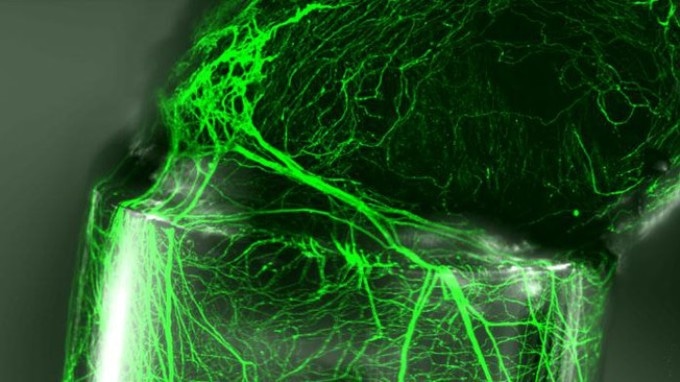Jan 25 2017
 Credit: 2017 EPFL
Credit: 2017 EPFL
Scientists at EPFL’s Laboratory of Photonic Materials and Fiber Devices, which is operated by Fabien Sorin, have developed a new technique for imprinting nanometric patterns on the outside and inside of polymer fibers. These polymer fibers may be useful in a number of applications, for instance, to produce optical effect, guide nerve regeneration, and ultimately create smart bandages and artificial tissues.
The innovative yet simple method can be used for imprinting or drawing complex and tiny nanometric patterns on hollow polymer fibers. The study has been reported in Advanced Functional Materials.
This breakthrough presents many possible applications. For example, the imprinted designs can be used to render a fiber water-resistant or to impart it with certain optical effects. The imprinted designs may also guide the growth of stem-cells in textured fiber channels or could even be used to break down the fiber at a particular point and location in time to discharge drugs as part of a smart bandage.
Stretching the Fiber Like Molten Plastic
The researchers developed their nanometric imprints by applying a thermal drawing technique, which is used to make optical fibers. In this method, millimeter-sized patterns are imprinted or engraved on a preform, which is a microscopic version of the target fiber. This engraved perform is then heated to alter its viscosity, expanded like molten plastic into a thin, long fiber, and finally allowed to harden again.
When the pattern is stretched, it shrinks in size and at the same time retains its position and proportions. However, this method has a major drawback - below the micrometer scale, the nanometric pattern does not remain intact.
When the fiber is stretched, the surface tension of the structured polymer causes the pattern to deform and even disappear below a certain size, around several microns.
Fabien Sorin, EPFL
To prevent this issue, the EPFL team used a sacrificial polymer on which they sandwiched the imprinted preform. During stretching, the sacrificial polymer protects the pattern by reducing the surface tension, and once the stretching is completed the polymer is discarded. This novel method enabled the researchers to apply minute and highly complex to different types of fibers.
“We have achieved 300-nanometer patterns, but we could easily make them as small as several tens of nanometers,” said Sorin.
This is the first time where such tiny and highly complex patterns have been engraved on flexible fiber on a massive scale.
This technique enables to achieve textures with feature sizes two order of magnitude smaller than previously reported. It could be applied to kilometers of fibers at a highly reasonable cost.
Fabien Sorin, EPFL
The EPFL researchers have collaborated with the Bertarelli Foundation Chair in Neuroprosthetic Technology, headed by Stéphanie Lacour, to highlight the promising applications of their achievement.
Working in vitro, the researchers applied their fibers to guide neurites from a spinal ganglion (located on the spinal nerve). This marks a positive step toward using these polymer fibers to create artificial tissue or aid in nerve regeneration.
This latest advancement presents new opportunities in many different fields, in addition to biology.
“Fibers that are rendered water-resistant by the pattern could be used to make clothes. Or we could give the fibers special optical effects for design or detection purposes. There is also much to be done with the many new microfluidic systems out there,” said Sorin.
Going forward, the research team will team up with other EPFL laboratories on new research initiatives such as exploring in vivo nerve regeneration. These possibilities could now be realized, thanks to the imprinted polymer fibers.